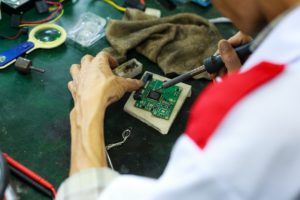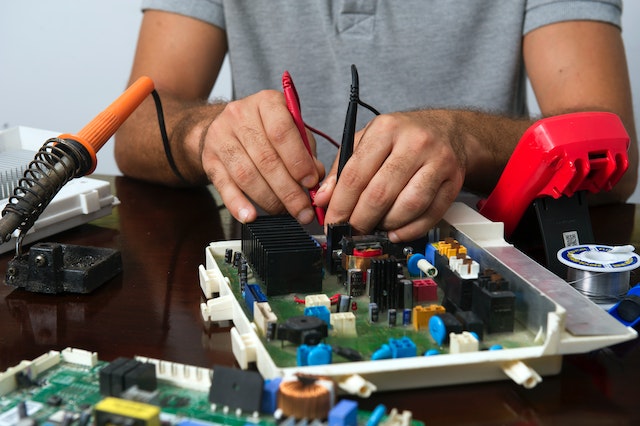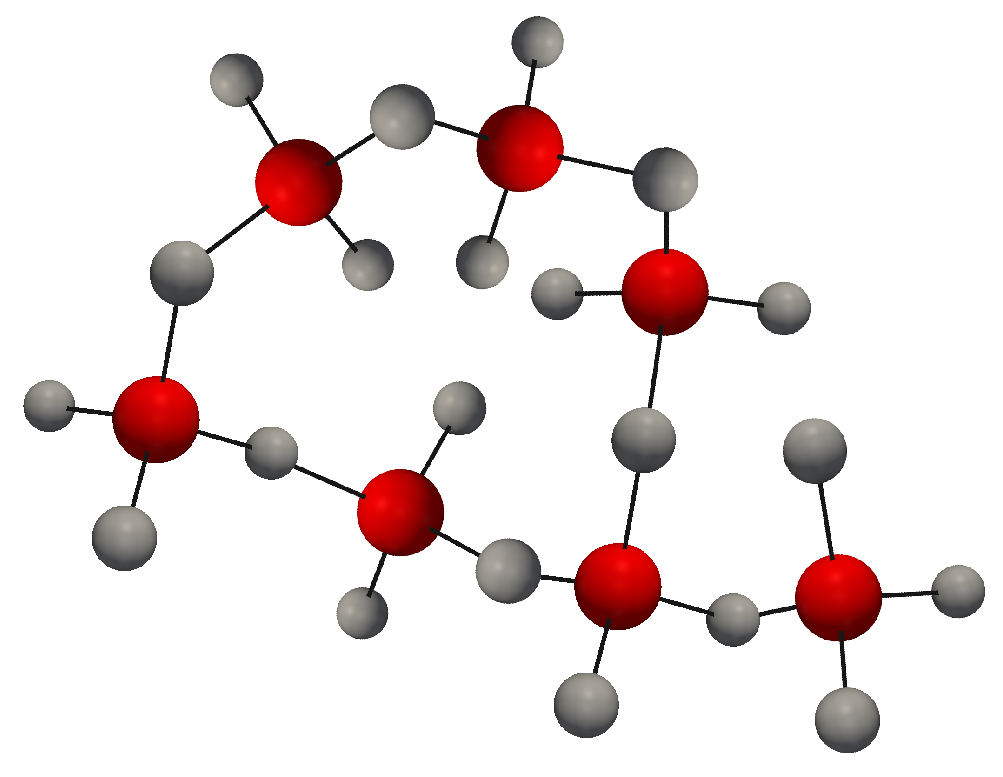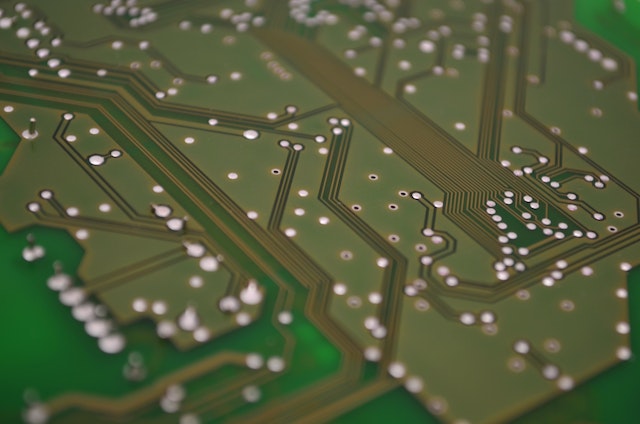Understanding the Role of GaAs in Solar Technology
Emerging as a formidable force in the realm of solar cell technology, Gallium Arsenide (GaAs) now stands tall. Its prominence as a photovoltaic material overshadows silicon-based cells, excelling in terms of efficiency and performance. Higher absorption coefficient, superior radiation resistance and advantageous temperature coefficients – these unique attributes make GaAS an essential ingredient for high-efficiency solar cells.

The incorporation of gallium arsenide into solar panels has ushered in remarkable enhancements to their overall functioning. The superiority of gallium arsenide over silicon is underscored by several key factors: firstly, heightened electron mobility within GaAs facilitates faster movement of electrons through the substance thereby amplifying the cell’s conversion efficiency; secondly, unlike Silicon-based cells which falter under severe heat conditions, GaAs maintains its effectiveness even at escalated temperatures; finally light-induced degradation – a common problem with Silicon-based cells – does not affect Gallium Arsenide.
Manufacturing GaAs solar cells involves thin wafer-like layers known as concentrators. These are designed to concentrate sunlight onto small areas abundant with high-efficiency photovoltaic material like GaAS resulting in efficient electricity generation compared to conventional methods. This innovative approach symbolizes significant progress towards harnessing renewable energy sources while enhancing efficiency and cost-effectiveness.
The Superiority of GaAs over Silicon in Solar Cell Production
The ascendance of Gallium Arsenide (GaAs) as the new champion in semiconductor materials for solar cell production is difficult to ignore. This supremacy over traditional silicon-based models stems from its distinctive characteristics that render it a more potent force in harnessing solar energy. An intriguing property of GaAs lies in the width of its bandgap, outclassing that of silicon and thereby boosting its capacity to absorb sunlight and transform it into electricity. Furthermore, the creation process ensures fewer defects on the GaAs wafer leading to less waste and superior material utilization.

Our measure for a solar cell’s prowess resides in its aptitude to convert inbound solar energy into viable electricity. In this spectrum, gallium arsenide reigns supreme with cells boasting higher efficiency than those birthed from silicon. The high-efficiency performance characteristic exhibited by GaAs cells owes their existence not only due to excellent electron mobility but also their resilience at elevated temperatures without any significant decrement in efficiency rates. As such, even when subjected under intense heat where other materials may falter or deteriorate quickly, gallium arsenide remains steadfast delivering reliable photovoltaic performance.
An additional edge arises within PV technology itself where compatibility with gallium arsenide substrates offers increased adaptability for multi-junction cell designs augmenting overall solar cell proficiency further still.
A testament to ingenuity lies in layering varied semiconductor materials each tailored specifically towards capturing different light wavelength ranges – an accomplishment achieved through research paving way for ultra-high-efficiency multi-junction cells with Gallium Arsenide playing a crucial role alongside others like Germanium and Indium Gallium Phosphide.
This methodology enables us tap into a broader spectrum derived from sunlight converting it effectively into power output thus catapulting such advanced designs as future contenders within renewable energy technologies including space satellites and concentrated photovoltaics systems necessitating high-performance solutions under demanding circumstances.
Unveiling the High Efficiency of GaAs Solar Cells
The paramountcy of GaAs (Gallium Arsenide) over silicon in fabricating solar cells is to be emphatically accentuated. This predominance traces its origins back to the distinct attributes that this III-V semiconductor substance encompasses. Unlike conventional silicon solar cells, gallium arsenide outshines them by delivering a heightened efficiency ratio and being exceptionally suitable for thin film applications. The amalgamation of gallium and arsenic culminates into a crystalline structure capable of absorbing sunlight with supreme efficacy, thus rendering it as an ideal candidate for conversion of solar energy.
GaAs manifests its brilliance unambiguously in single-junction photovoltaic cells among all types of solar cell applications. These high-efficiency sun-powered cells function by establishing a junction or frontier between two varieties of semiconductors – p-type and n-type – thereby initiating an electric field across the junction under light exposure. However, what distinguishes GaAs from other PV cell technologies like silicon panels lies in its capacity to operate at escalated temperatures without any loss in efficiency along with superior resistance against radiation damage – traits which have rendered it highly coveted for space applications such as satellite power systems.
Furthermore, multi-junction sun-powered cells represent yet another domain where GaAs has demonstrated superiority over silicon concerning performance metrics. These advanced PV contrivances employ numerous layers or “junctions” primarily composed of III-V materials akin to Gallium Aridise (GaAs), each engineered towards capturing different segments of the sunlight spectrum thereby maximising overall efficiency rates significantly beyond those achievable via traditional single-junction designs based on Silicon technology solely.
In addition to these benefits, corporations like Alta Devices have also showcased how concentrator systems can further augment photovoltaics’ performance by directing sunlight onto smaller but more efficient GaAS-based PV cell areas instead of scattering it across larger less-efficient Silicon surfaces.
This serves only as additional validation towards why many industry insiders consider employing Gallium Arsenide not merely as an alternative but rather an enhanced substitute for Silicon when targeting harnessing maximum Solar Power attainable today.
Harnessing the Power of Photovoltaic Material: A Closer Look at GaAs
In the solar technology realm, GaAs’s role has been a pivotal one, catalyzing an upswing in solar cell performance. This ubiquitous semiconductor is primarily employed in crafting thin-film solar cells, owing to its superior electron mobility and resilience under high temperatures. This trait of withstanding heat allows for constant energy output even amidst soaring temperatures – a feat that silicon-based solar cells struggle to match as their efficiency dwindles under similar conditions.
Moreover, their outstanding attributes place GaAs based solar cells on a pedestal for large-scale applications such as forming parts of colossal solar arrays. The prowess of these GaAs cells outshines their Silicon (Si) counterparts as they flaunt remarkable light absorption characteristics coupled with an impressive sunlight-to-electricity conversion rate – two key components essential for effective photovoltaic material.
Upon close scrutiny of GaAS, it becomes evident that these types of cells are relatively impervious to defects which could potentially mar the performance of the solar cell – further cementing why they steal the show from Si Solar Cells.
When gauged on overall productivity parameters, it is unmistakable that the brilliance of GaAs wafer outperforms other materials employed in fabricating photovoltaic devices. It merits emphasis here that despite Si-based technologies reigning supreme currently due to reduced production and processing costs, recent advancements hint at Gallium Arsenide (GaAs) technology promising far superior results when it comes down to harnessing power from our sun efficiently.
Indeed some studies advocate that single-junction GAaS-based solar cell can clock over 29% efficiency – a milestone never attained by conventional silicon models! Undoubtedly this highlights how gallium arsenide occupies a lofty position when discussing maximizing potentialities for optimal conversion rates in terms of tapping into abundant reservoirs of sun’s life-giving energy.
Why GaAs is the Preferred Semiconductor Material in Solar Cell Technology
In the realm of solar cell production, Gallium Arsenide (GaAs) has surfaced as a formidable contender to silicon, its superiority underscored by distinct traits and multiple benefits. A key characteristic that sets GaAs apart is its expansive bandgap which fuels efficacious conversion of sunlight into electricity. This feature endows GaAs devices with the capacity to outdo their silicon peers in terms of efficiencies – evidenced by the highest recorded efficiency for such PV cells at an astounding 29.1% – attesting to the potential supremacy of solar cell efficiency when harnessed via GaAs.
The fabrication technique utilized for creating GaAs pivots on layering thin sheets of gallium arsenide on a flexible substrate rather than deploying rigid silicon wafers. This strategic move not only curtails material expenses but also paves way for more adaptable solar cell applications like assimilation into curved surfaces or portable lightweight gadgets. When positioned atop other photovoltaic substances with smaller bandgaps such as germanium or indium gallium phosphide – colloquially referred to as ‘GaAs on top’ assembly – these cells are equipped to seize even more sunlight over varied wavelengths thereby augmenting their performance further.
Radiation resistance inherent in GaAs offers another significant advantage; this distinctive attribute renders it apt for deployment in severe environments such as space where radiation levels peak and durability is crucial. Additionally, research findings have indicated that resilience offered by a device based on GaA against radiation often surpasses that shown by conventional silicon-based cells under analogous circumstances thus making them highly coveted within aerospace industries among other sectors where durability reigns supreme.
This toughness combined with ideal energy conversion rates plays an instrumental role in cementing Gallium Arsenide’s status as one preferred semiconductor materials extensively employed across numerous fields today while simultaneously hinting at exhilarating future prospects given ongoing advancements within this field.







Comments are closed.